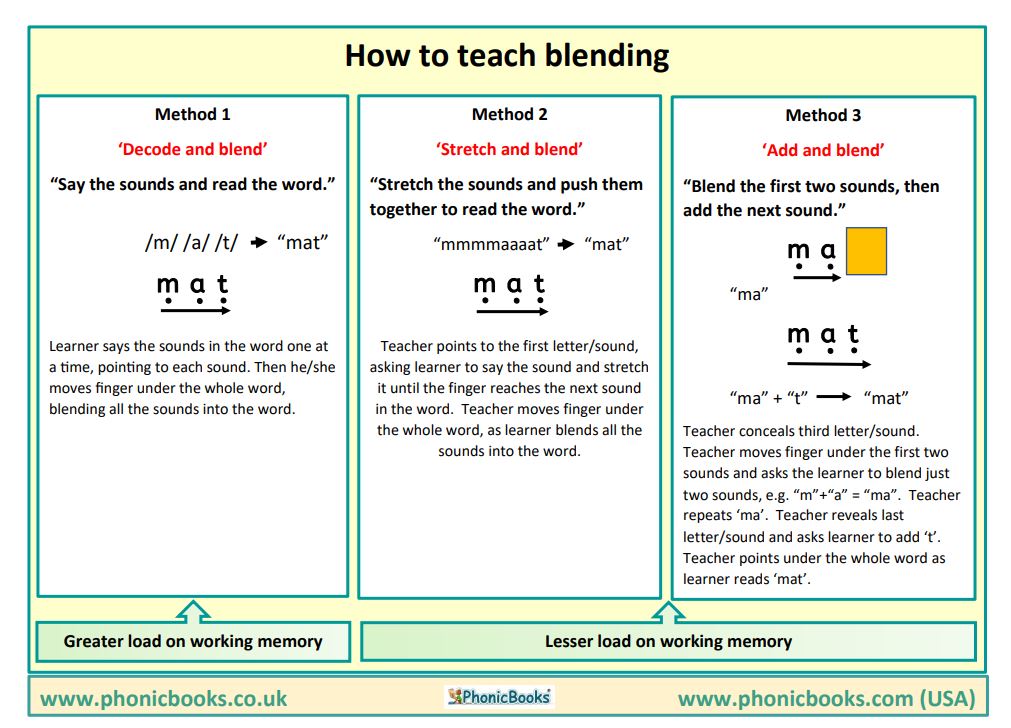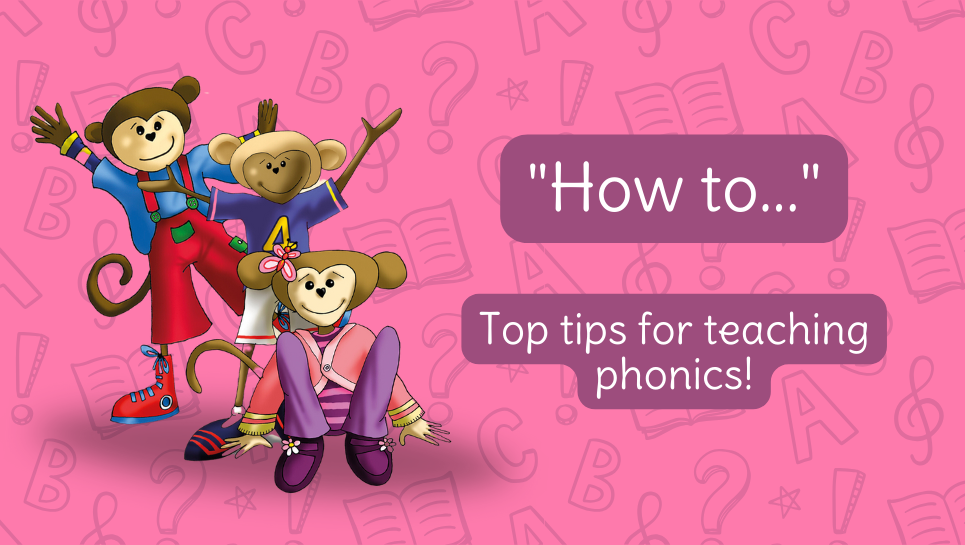In our ‘how to…’ series we are going to delve into all things phonics instruction and give you our expert advice on developing confident readers.
***
In her podcast, Evidence Based Education, Dr Tracy Alloway explains working memory as ‘your ‘active’ memory. The memory you use to work with information.’ She describes working memory as ‘post-it notes’ stuck on a board. Working memory has two important features: 1. It has limited space. 2. It is used as temporary storage, like a holding zone. We either keep the information and store it somewhere safe for later retrieval (long-term memory), or we lose it if we haven’t engaged with it enough.
In John Sweller’s podcast, The eLearning Coach, he explains that working memory is limited to 2–4 items of new information and it can only hold onto them for 20 seconds. Yes, just 20 seconds! He also explained that long-term memory is limitless and what we do is dip into long-term memory to retrieve information and work on it within working memory. The more useful information is stored and can be retrieved from long-term memory, the easier the working task is in working memory. He describes a situation when too much information creates a bottleneck that working memory just can’t handle, which is called cognitive overload. Do you have children that seem stressed, confused, or disengaged when reading? They may be experiencing cognitive overload!
What does this mean for teaching reading?
Many children find blending very difficult and it can be a real stumbling block. Why is it hard for some children to blend and how is this connected to working memory? Working memory is the post-it board with those flaky post-it notes (letter/sound correspondences) that if not secured, will fly off the board. As teachers, we need to find ways to secure those post-it notes and help children hold on to them to blend sounds together into a word.
It is difficult to really know what is going on in the brain, but what we do know is that in order to decode words efficiently, children need:
- An automatic recall of letter sounds so that when they see a squiggle or a string of squiggles on the page they know what sound these letters represent. This has to happen at great speed.
- An ability to hold a number of sounds together in working memory for long enough to blend them together into a word.
- The ability to retrieve and match a meaning for the word they have sounded out.
How can we help children who find blending difficult?
Fluent readers do this automatically and without thinking, but for some novice readers, a lot is going on in working memory. How can we help children who find blending difficult? Firstly, making sure they have automatic recall of letters/sounds is imperative to speed up the process. Secondly, making sure children have a sufficient vocabulary so they can identify the word they have just blended is also important. But what about the blending part? How can teachers help here? There are three ways of helping children blend sounds into words. The first puts more load on working memory. The next two put less load on working memory:
Decode and blend – the child sounds out the sounds in the word separately and blends them together.
Stretch and blend – the teacher helps the child stretch the sounds into one another.
Add and blend – the teacher asks the child to blend the first two sounds and then adds the next.
See the graphic below that explains how to teach the three methods of blending.

***
Tami Reis-Frankfort began teaching in a public school in London, UK and later worked as a support teacher of English Language Learners. She trained in Specific Learning Difficulties (Dyslexia) and for the first time discovered Structured Literacy. This was followed by training in Phono-Graphix and Sounds-Write, both Linguistic Phonics Programs. Tami began to tutor at a Dyslexia Center and there she found she did not have suitable decodable reading materials for her students. In 2004, together with two colleagues, Wendy Tweedie and Clair Baker, she founded Phonics Books Ltd, a specialist publisher of decodable books and resources.


